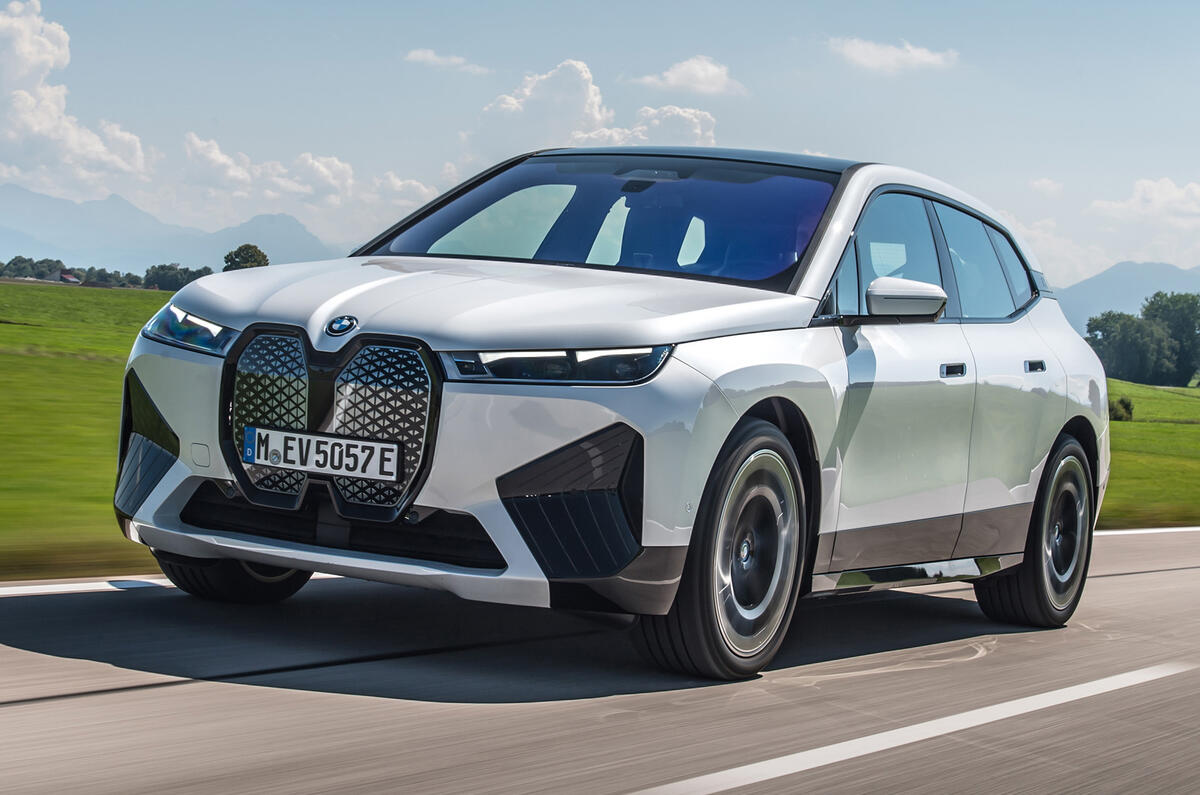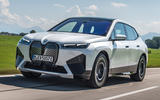What is it?
We’ve waited a long time for the iX. Originally previewed by the Vision iNext concept at the Paris motor show in 2018, it’s BMW’s third EV, following the BMW i3 and BMW iX3.
BMW sees the introduction of the distinctively styled large SUV as a watershed moment in its transition from traditional internal combustion engines towards an all-electric future, suggesting the lessons learned in its development will influence new models such as the imminent i4 executive saloon and electric versions of the next-generation 5 Series and 7 Series.
The iX is meant to convey a new form of relaxed driving pleasure. With power outputs ranging from 326bhp in the xDrive40 to 600bhp-plus in the yet-to-be-revealed M60, though, performance remains a priority, despite the weight penalty incurred by a large battery pack.
The lack of a number in the model’s name is meant to signal its positioning as the flagship of BMW’s i sub-brand. Although the radical lines of the Vision iNext have been watered down for production, there’s still no denying that this is a BMW like no other.
The basic proportions follow those of the BMW X5. However, the surfaces are super-smooth and a lot more rounded. And rather than serving as an air intake, the giant kidney ‘grille’ is a composite panel that’s transparent to various sensors behind it, which are used for the car’s many driver assistance systems. The slim headlights, meanwhile, use the latest LEDs and can be ordered with BMW’s Laserlight technology.
For the first time on a BMW SUV, the doors are frameless and do away with conventional handles for an electronic mechanism. The polygonal wheel arches – a feature brought over from the concept – form an integral part of the body sides. And there’s a wraparound look to the rear end, with thin horizontal LED tail-lights integrated within the tailgate to accentuate the car’s width.
Our test car had optional 22in alloy wheels with performance-oriented 275/40-profile Bridgestone Alenza tyres, providing it with a suitably confident stance. At 4953mm long, 1967mm wide and 1695mm tall, the iX is 15mm longer, 37mm narrower and 53mm lower than the current X5. It also has a wheelbase 28mm longer than its ICE-powered sibling’s.
The smooth and unadorned exterior, combined with a fixed bonnet, a flat underbody, low-drag wheels and other detailed measures, nets the iX a drag coefficient of just 0.25 on standard 20in wheels – close to the class best.
It sits on a heavily modified version of BMW’s CLAR platform, mated to a “carbonfibre cage”. The lightweight inner body structure supports composite body panels, providing it with greater rigidity than any other BMW. The upshot is that our car weighs 2510kg at the kerb – 475kg more than the petrol X5 xDrive40i. The iX has two electric motors: one at each axle driving through fixed-ratio transmissions to enable it to vary drive between the front and rear wheels depending on driving conditions across two driving modes: Efficiency and Sport.
In the xDrive50 variant driven here, the front motor makes 254bhp and 269lb ft and the rear motor 309bhp and 295lb ft, combining for maximums of 516bhp and 564lb ft. A 105.2kWh lithium ion battery pack operating at 380V is mounted underneath the floor and within the centre tunnel, providing the iX with a low centre of gravity and a range of between 341 and 392 miles. Our testing suggested that you will be able to exceed 300 miles between charges with regular driving.























































Add your comment